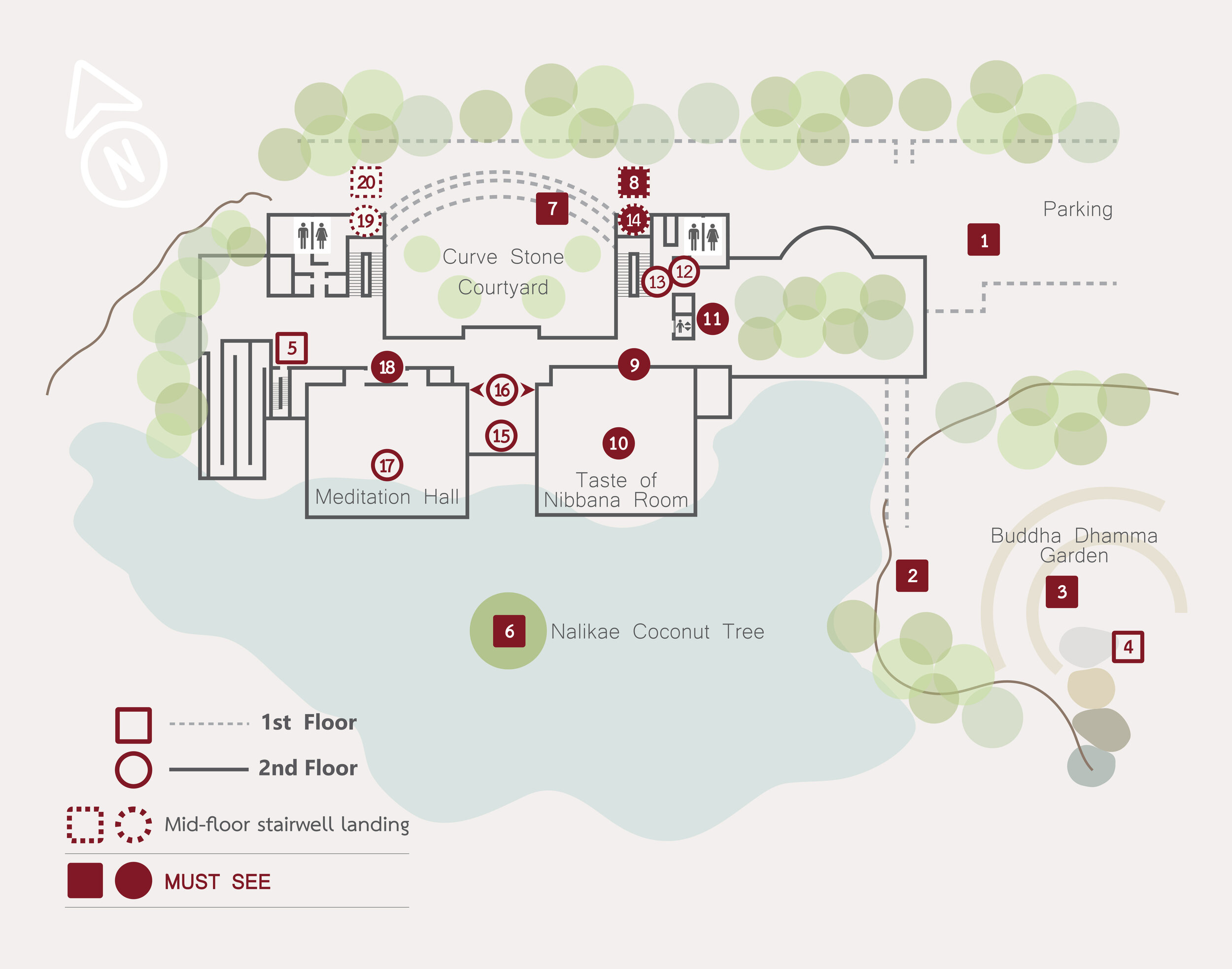Buddha Dhamma Garden
Nature is Dhamma’s best classroom
“In the original Pali language, the word ‘Dhamma’ was used to refer to all of the intricate and involved things that go to make up what we call Nature. Time will not permit us to discuss this point in detail here, so we shall mention just the main points. The word ‘Dhamma' embraces: Nature itself; The law of Nature; The duty of each human being to act in accordance with the Law of Nature and the benefits to be derived from this acting in accordance with the Law of Nature.”
Buddhadassa Bhikkhu repeatedly reinforces that the Dhamma is the Natural Truth. This is nature at a much deeper level than everyday references to nature pertaining to landscapes, habitats and environmental quality. He further instructs that it is our communion with, reverence for and stewardship of the natural world that provide requisite lessons toward developing this comprehensive understanding of Nature—of Dhamma.
At Suan Mokkh he promoted harmony with the streams, forest and wildlife. Structural interventions were to be minimized, as were their material resource requirements. Fewer buildings also meant less time needed for maintenance, thus more time to observe and interact with nature and for Dhamma study.
He taught the Dhamma much as the Buddha did some 2500 years prior. The earth’s natural processes shaped the contours of his classroom; they nurtured the trees whose trunks served as walls and whose canopy provided an ever-changing ceiling, and they carved the stones and pummeled the sand that formed its seats.
“Trees, rocks, sand, even dirt and insects can speak. This doesn’t mean, as some people believe, that they are spirits or gods. Rather, if we reside in nature near trees and rocks, we’ll discover feelings and thoughts arising that are truly out of the ordinary. At first we’ll feel a sense of peace and quiet that may eventually move beyond that feeling to a transcendence of self. The deep sense of calm that nature provides through separation from the troubles and anxieties that plague us in the day-to-day world serves to protect the heart and mind. Indeed, the lessons nature teaches us lead to a new birth beyond the suffering that comes from attachment to self. Trees and rocks, then, can talk to us. They help us understand what it means to cool down from the heat of our confusion, despair, anxiety, and suffering.”
The Buddha Dhamma Garden at BIA evolved in much the same way, so that it too serves as an appropriate venue for Dhamma activities.
This area is a former tree nursery. All trees present now were here before the creation of the garden. The golden flamboyant trees (Peltophorum pterocarpum or 'Nonsi' in Thai) are pillars of a natural temple with the sky as its roof.
The main Bodhi tree is surrounded by other trees along with three tiers of stone circles. These tiers symbolize those Dhamma teachings presented in groups of three: the three marks of existence (Tilakkhana), the three-fold training (Sikkha), the Three Jewels (Triratna) and the Three Baskets of teachings (Tipitaka).
White sand was taken from a beach in Surat Thani Province, where Suan Mokkh monastery is located. The 37 stones are seats for a “stone school” where people can come and discuss Dhamma. They represent the 37 qualities contributing to, or constituting, Enlightenment (Bodhipakkhiya-Dhamma 37).




